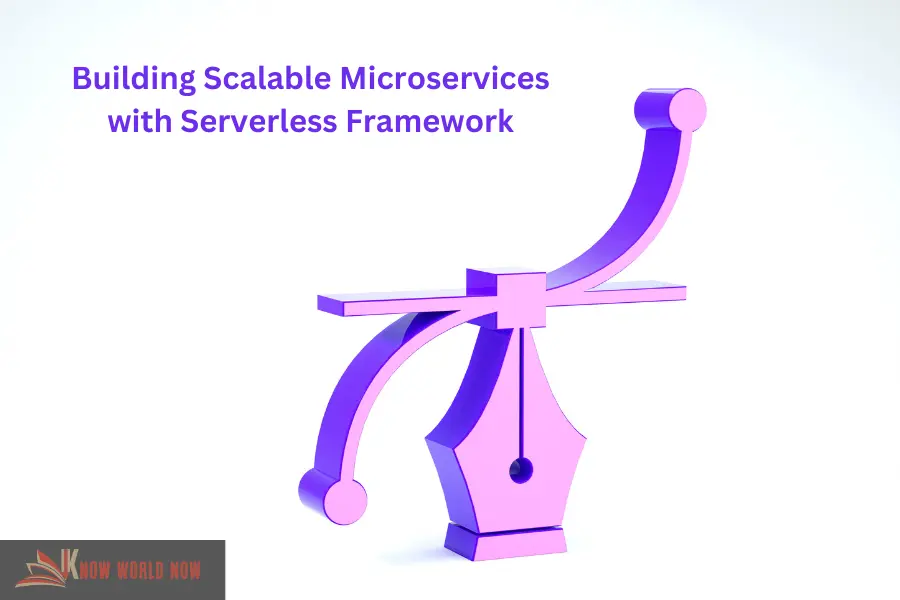In the ever-evolving world of software development, agility and scalability are paramount. Serverless architecture has emerged as a game-changer in this regard, enabling serverless developers to build scalable microservices that can handle dynamic workloads efficiently.
The Serverless Framework, an open-source toolkit, has played a crucial role in simplifying the development and deployment of serverless applications. In this article, we will explore how serverless developers can leverage the Serverless Framework to build scalable microservices.
What Are Scalable Microservices?
Before delving into the specifics of using the Serverless Framework, it’s essential to understand what scalable microservices are. Microservices are an architectural approach where a complex application is broken down into small, independent services that can be developed, deployed, and scaled independently.
Scalability in this context refers to the ability to handle increased workloads by adding more resources or instances of a service.
Why Serverless for Microservices?
Serverless computing is designed for scalability and cost-efficiency. It allows serverless developers to focus on writing code without worrying about server provisioning, maintenance, or scalability issues. Each microservice can be a serverless function, and with the right framework, it becomes easy to manage them collectively.
Getting Started with the Serverless Framework
Serverless developers can quickly get started with the Serverless Framework. It simplifies the process of defining, deploying, and managing serverless applications. To begin, install the Serverless Framework via npm and configure it with your cloud provider of choice, such as AWS, Azure, or Google Cloud.
Defining Microservices with Serverless Framework
Once the Serverless Framework is set up, serverless developers can define their microservices using a simple and intuitive configuration file. This file specifies the functions, events, and resources associated with each microservice. With this declarative approach, developers can easily manage and scale individual services.
Leveraging Serverless Framework Plugins
One of the powerful features of the Serverless Framework is its extensibility through plugins. Serverless developers can find a wide range of community-contributed plugins to enhance their microservices. Whether it’s authentication, monitoring, or CI/CD integration, there’s likely a plugin available to streamline the development process.
Auto-scaling and Cost Optimization
Scalability is a key concern for microservices, and the Serverless Framework excels in this area. With auto-scaling, serverless functions automatically handle varying workloads, adding more instances when needed and scaling down to zero during idle periods. This dynamic scaling ensures cost optimization by only charging for actual usage.
Monitoring and Troubleshooting
Serverless developers need robust monitoring and troubleshooting tools to ensure the reliability of their microservices. The Serverless Framework integrates seamlessly with various monitoring and observability services, allowing developers to gain insights into their applications’ performance, troubleshoot issues, and optimize resource allocation.
Security and Compliance
Security is a top priority when building microservices. The Serverless Framework supports secure deployment practices, such as least privilege access and encryption. Additionally, serverless developers can enforce compliance and security policies through the use of cloud-native security tools.
CI/CD Integration
Continuous Integration and Continuous Deployment (CI/CD) are essential for the rapid development and deployment of microservices. The Serverless Framework can be integrated into CI/CD pipelines, enabling serverless developers to automate testing, deployment, and monitoring, thus ensuring a smooth development lifecycle.
Conclusion
In the world of microservices, scalability is crucial, and the Serverless Framework empowers serverless developers to build scalable microservices with ease.
By abstracting away server management and providing powerful abstractions for defining, deploying, and managing serverless functions, the Serverless Framework has become an indispensable tool for modern application development.
As serverless adoption continues to grow, serverless developers must master the Serverless Framework to harness its full potential in building scalable and cost-effective microservices.
With its robust ecosystem of plugins and seamless integration with cloud services, the Serverless Framework is the go-to choice for those looking to build and manage scalable microservices in the serverless paradigm.
So, embrace the serverless revolution and start building scalable microservices with the Serverless Framework today. Your applications will thank you for it!




